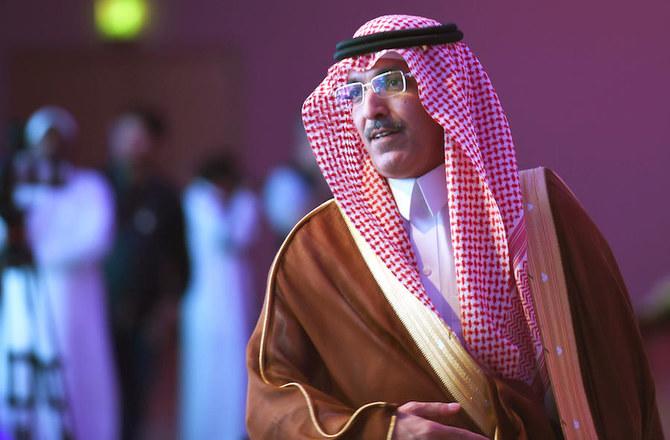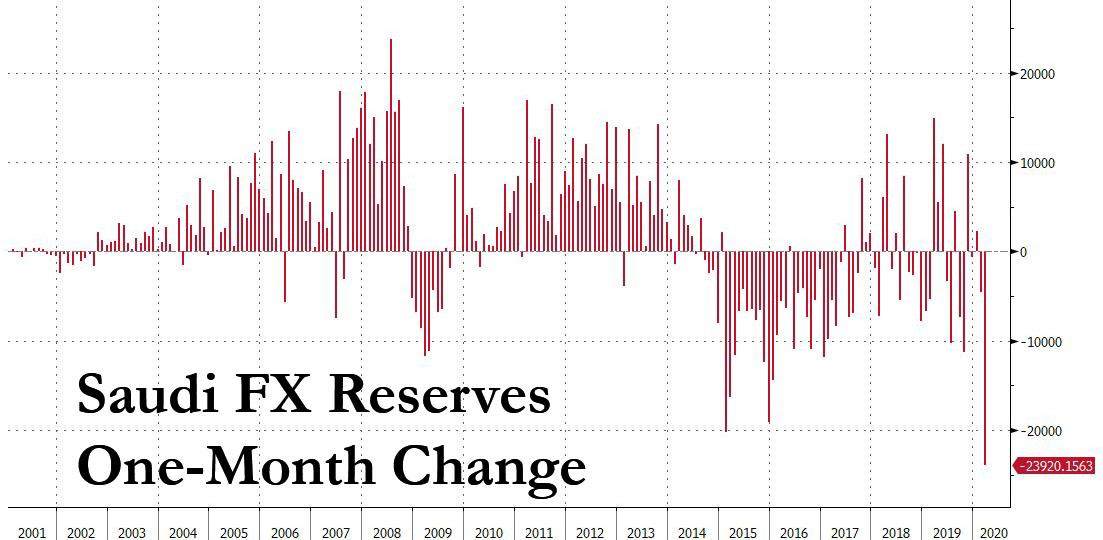Saudi Arabia Running Out Of Money: Riyadh To Slash Spending By $27 Billion, Suspend Cost Of Living Allowance
Last weekend we quoted Finance Minister Mohammed Al-Jadaan, who warned that the world’s biggest oil exporter hasn’t witnessed “a crisis of this severity” in decades, adding that government spending will have to be cut “very deeply”, something we touched on previously.
We didn’t have long to wait, because early on Monday, the Saudi government – which appears to be running out of money fast – ordered government spending cuts including suspending the cost of living allowance amid broad austerity measures for about $26.6 billion and a tripling of the value-added tax as part of measures aimed to shore up state finances, which have been battered by low oil prices and the coronavirus.
“Cost of living allowance will be suspended as of June first, and the value added tax will be increased to 15% from 5% as of July first,” said the Saudi finance minister according to the state news agency, suggesting Saudi Arabia is on the verge of a full-blown fiscal crisis.

Other measures includes canceling or delaying some operational and capital expenditures for a number of government agencies and reducing the credits planned for a number of state initiatives, including the Vision 2030 project, just as we predicted.
“The covid-19 challenges have led to a decline in government revenues, and pressure on public finances to levels that are difficult to deal with later without harming the kingdom’s macroeconomics and public finances in the medium and long term,” Al-Jadaan said. “Therefore more spending cuts must be achieved, and measures to support the stability of non-oil revenues.”
Already under a strict curfew to contain the spread of the coronavirus pandemic, the world’s largest oil exporter has been affected by the oil price rout and global crude production cuts to help balance the market. The price of Brent crude crashed by more than 50% in March, contributing to a record $27 billion monthly drop in the Saudi central bank’s net foreign assets.
Adding insult to injury, last week we warned that the Kingdom may soon be dealing with a funding crisis as well: the collapse in crude prices and the government’s drop in foreign reserves, which plunged by a record $27BN in March…
… is putting more pressure on the Saudi riyal. For now, however, prices for 12-month dollar-riyal forward contracts are well short of their all-time high reached in 2016.
Commenting on the drop in reserves, Al Jazeera said that when the kingdom last stared down the crash in crude in 2014, it wielded reserves that peaked at over $735 billion. The stockpile was down by over a third just three years later, channeled almost entirely toward deficit spending.
And now, Saudi Arabia is blowing through its reserves at the fastest pace in at least two decades, even as the government is barely using the holdings to cover fiscal needs. Following its debut in international bond markets in 2016, borrowing covered most of the budget deficit in the first quarter.
As a result, with its buffers already fragile and the economy hammered by the coronavirus, Saudi Arabia is looking to scale back spending and rely more on debt.
There was some good news: recently Goldman Sachs has predicted that the central bank’s reserves, down more than 100 billion riyals ($27 billion) in March alone, will stabilize soon. “Despite a further anticipated decline in oil revenues in the second quarter, we expect the rate of reserve burn to slow,” Farouk Soussa, a Goldman Sachs economist, said in a report.
Alas, judging by the Saudi action, Riyadh is clearly far more concerned that the pain will straight well beyond the second quarter
Tyler Durden
Sun, 05/10/2020 – 23:36
via ZeroHedge News https://ift.tt/2YQVo5f Tyler Durden
